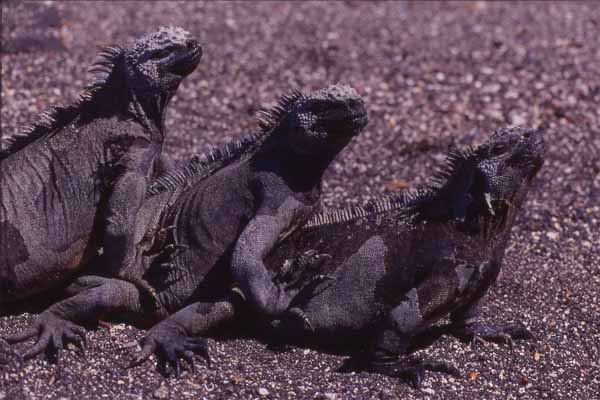MARINE IGUANA 2: BEHAVIOR
The behavior of the marine iguana (Amblyrynchus cristatus) revolves around two primary needs: thermoregulation and breeding. Its population fluctuates due to variations in water temperature that in turn influence the abundance of its algae food. During boom periods, the numbers of iguanas on a single rocky beach can reach several thousand. The animals congregate to preserve heat accumulated during the day and to avoid heat loss after swimming in the cold sea. When the sun is high, and beating down on the black lava rock, they move around so as to shade each other to prevent overheating. This all seems very friendly and cooperative until breeding season when males contend over females, often engaging in dramatic battles with one another. |
Click below to see the photos and information on marine iguanas:
mass of iguanas
three iguanas
MASS OF IGUANAS
Click image to return to gallery
Marine iguanas love to hang out together. Their feeding time is synchronized, so they move as a group and sleep as a group as shown here. The photo was taken late morning after most individuals have returned from their feeding for the day. These iguanas are on a rocky beach on the eastern shore of Ferndina Island, site of the largest populations of marine iguanas. Count how many are in this picture! |
THREE IGUANAS
Click image to return to gallery
It's said that "Two's company, three's a crowd." Well, these iguanas don't think so! When they get hot, iguanas will orient toward the sun and use each other for shade. Notice the placing of the shadows show that these are pointed toward the sun. (taken at Espinoza Point on Fernandina Island). |
Learn about marine iguana natural history
previous photos
|
next photos
|
|---|




